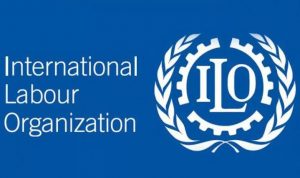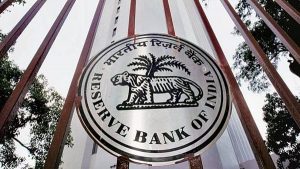Today Current Affairs: 15th August 2022 for UPSC IAS exams, State PSC exams, SSC CGL, State SSC, RRB, Railways, Banking Exam & IBPS, etc
Table of Contents
National Intellectual Property Awareness Mission (NIPAM):

National Intellectual Property Awareness Mission (NIPAM), launched in 2021, has achieved the target of imparting Intellectual Property (IP) awareness and basic training to 1 million students.
- The target has been achieved ahead of the deadline which was 15 August 2022.
National Intellectual Property Awareness Mission (NIPAM)
- The pan-India mission aims to provide awareness on intellectual property and its rights to 1 million students.
- It aims to inculcate the spirit of creativity and innovation to students of higher education (classes 8 to 12) and ignite and inspire the students of college/Universities to innovate and protect their creations.
- The program is being implemented by the Intellectual Property Office, the Office of Controller General of Patents, Designs and Trade Marks (CGPDTM), Ministry of Commerce and Industry.
- During the period 08 December 2021 to 31st July 2022, the following milestones were achieved:
- No. of participants (students/faculty) trained on IP: 10,05,272
- Educational institutes covered: 3,662
- Geographical coverage: 28 states and 7 Union Territories
- Intellectual property rights (IPR) are the rights given to persons over the creation of their minds:
- Inventions, literary and artistic works, and symbols, names and images used in commerce.
- They usually give the creator an exclusive right over the use of his/her creation for a certain period of time.
- These rights are outlined in Article 27 of the Universal Declaration of Human Rights, which provides for the right to benefit from the protection of moral and material interests resulting from authorship of scientific, literary or artistic productions.
- The importance of intellectual property was first recognized in the Paris Convention for the Protection of Industrial Property (1883) and the Berne Convention for the Protection of Literary and Artistic Works (1886).
- Both treaties are administered by the World Intellectual Property Organization (WIPO).
Global Employment Trends for Youth: ILO

The International Labour Organisation (ILO) has released a report titled “Global Employment Trends for Youth 2022: Investing in transforming futures for young people”.
Findings Globally:
Gender Disparity in EPR:
- Young women exhibited a much lower Employment-to-Population ratio (EPR), showing that young men are almost 1.5 times more likely than young women to be employed.
- In 2022, 27.4 % of young women globally are projected to be in employment, compared to 40.3 % of young men.
- Covid-19 Pandemic has worsened the numerous labour market challenges facing those aged between 15 and 24 years, who have experienced a much higher percentage loss in employment than adults since early 2020.
- The total global number of unemployed youths is estimated to reach 73 million in 2022, a slight improvement from 2021 but still six million above the pre-pandemic level of 2019.
- The recovery in youth unemployment is projected to diverge between low- and middle-income countries on the one hand and high-income countries on the other.
- High income countries are the only ones expected to achieve youth unemployment rates close to those of 2019 by the end of 2022.
- Meanwhile, in the other country income groups, the rates are projected to remain more than 1% above their pre-crisis values.
- Young people were well-placed to benefit from the expansion of the so-called green and blue economies, centred around the environment and sustainable ocean resources respectively.
- An additional 8.4 million jobs may be created for young people by 2030 through green and blue investments, notably in clean and renewable energies, sustainable agriculture, recycling and waste management.
- Achieving universal broadband coverage by 2030 may lead to a net increase in employment of 24 million new jobs worldwide, of which 6.4 million would be taken by young people.
- Investments in care sectors would create 17.9 million more jobs for young people by 2030.
Findings Related to India:
- The youth employment participation rate declined by 0.9 % over the first nine months of 2021 relative to its value in 2020, while it increased by 2 % for adults over the same time period.
- The situation is particularly severe for very young people aged 15-20 years.
- Indian young women experienced larger relative employment losses than young men in 2021 and 2022.
- In general, the high youth employment losses in India drive up the global average employment losses.
- Young Indian men account for 16% of young men in the global labour market, while the corresponding share for young Indian women is just 5%.
- School closures lasted 18 months and among the 24-crore school-going children, only 8% of such children in rural areas and 23% in urban areas had adequate access to online education.
- Given the deeply unequal access to online resources in developing countries, children from socio-economically disadvantaged families, which are the large majority, had almost no access to education.
- School closures not only prevented new learning, but also led to the phenomenon of “learning regression”, that is, children forgetting what they had learned earlier.
- In India, 92% of children on average lost at least one foundational ability in language and 82% lost at least one foundational ability in mathematics.
- The study found out that teachers in non-state schools are often paid significantly less than those in state schools.
- Teachers in low-fee private schools in India, Kenya, Nigeria and Pakistan are paid between one eighth and one half of what their counterparts in the state sector receive.
First Set Of Guidelines For Digital Lending : RBI

The Reserve Bank of India (RBI) issued the first set of guidelines for digital lending, to crack down on illegal activities by certain players.
- Towards addressing concerns that had sprung up, the RBI had constituted a Working Group on ‘digital lending including lending through online platforms and mobile apps’ (WGDL) in January, 2021.
- The group has proposed stricter norms for digital lenders in November 2021, some of which have been accepted and included in the new norms while others are under examination.
Digital Lending:
- It consists of lending through web platforms or mobile apps, by taking advantage of technology for authentication and credit assessment.
- Banks have launched their own independent digital lending platforms to tap into the digital lending market by leveraging existing capabilities in traditional lending.
Highlights of the Guidelines:
- All loan disbursals and repayments will be required to be executed only between the bank accounts of the borrower and the Regulated Entities (RE) without any pass-through or pool account of the Lending Service Providers (LSP) or any third party.
- Regulated Entities include a bank or a non-banking financial company.
- The new rules mandate that fees or charges payable to LSPs in the credit intermediation process will be paid directly by the bank or Non-Banking Financial Companies (NBFCs) and not by the borrower.
- All-inclusive cost of digital loans in the form of Annual Percentage Rate (APR) is required to be disclosed to the borrowers.
- The new norm prohibits any automatic increase in credit limit without the explicit consent of the borrower.
- It also provides, as part of the loan contract, a cooling-off/ look-up period during which the borrowers can exit digital loans by paying the principal and the proportionate annual percentage rate without any penalty.
- To protect data privacy, the data collected by digital lending apps has to be need-based, with the customer’s prior consent, and can be audited, if required.
- Banks will have to ensure that they, and the LSPs engaged by them, must have a suitable nodal grievance redressal officer to deal with fintech- or digital lending-related complaints.
- This officer will also deal with complaints against their respective Digital Lending Apps (DLAs).
- Current guidelines allow for the borrower to complain to the Integrated Ombudsman Scheme of the RBI if their grievance was not resolved by the bank within 30 days.
- REs are required to ensure that any lending done through DLAs has to be reported to Credit Information Companies (CICs), irrespective of its nature or tenor.
- More importantly, lending through the Buy Now Pay Later (BNPL) model also needs to be reported to CICs.
World Elephant Day:

World Elephant Day is an international annual event on August 12, dedicated to the preservation and protection of the world’s elephants.
- It was conceived in 2011 by Canadian filmmakers Patricia Sims and Michael Clark of Canazwest Pictures, and Sivaporn Dardarananda, Secretary-General of the Elephant Reintroduction Foundation in Thailand.
- It was officially founded, supported and launched by Patricia Sims and the Elephant Reintroduction Foundation on August 12, 2012.
- There are three species of elephants — African Forest, African Savanna (bush), and Asian.
- The animals can be differentiated by their ears and trunks. African elephants are larger. Their ears are also larger and shaped like Africa.
Chronic Fatigue Syndrome:

A woman from Bengaluru has filed a petition in the Delhi High Court to stop her Noida-based friend, who has been suffering from Chronic Fatigue Syndrome since 2014, from travelling to Europe to undergo a physician-assisted euthanasia.
- Also known as myalgic encephalomyelitis (ME/CFS), Chronic Fatigue Syndrome, is a serious and debilitating disease that affects the nervous system, the immune system and the body’s production of energy.
- Experts have suggested that the term can trivialize the severity of the illness.
- In a 2015 report, the US Institute of Medicine proposed the term systemic exertion intolerance disease (SEID).
- Its causes are still unknown.
- However, the potential triggers would include viral or bacterial infection, hormonal imbalances and genetic predispositions.
- There is no specific test for the disease, and doctors have to rely on medical examinations, blood and urine tests.
- ME/CFS can affect anyone, from children to adults of all ages.
- According to the CDC, it’s more common in women and people between 40 and 60 years old.
- As of yet, there is no specific cure or approved treatment.
Primary Agricultural Cooperative Societies (PACS):

Union Home and Cooperation Minister Amit Shah has said that the government will bring model by-laws to govern all Primary Agricultural Cooperative Societies (PACS) in the country.
- He said, the sick and defunct PACS should be revived or taken for liquidation.
- Amit Shah was addressing a national conference on rural cooperative banks organised by the Ministry of Cooperation and the National Federation of State Cooperative Banks (NAFSCOB) at Vignan Bhavan in New Delhi.
- Describing the PACS as pillars of the cooperative movement, Amit Shah called for strengthening of the PACS by diversifying them into various other activities.
- Amit Shah stressed the need to establish more than 2 lakh new PACS across the country to achieve the target of providing agri-finance worth 10 lakh crore rupees through cooperatives.




